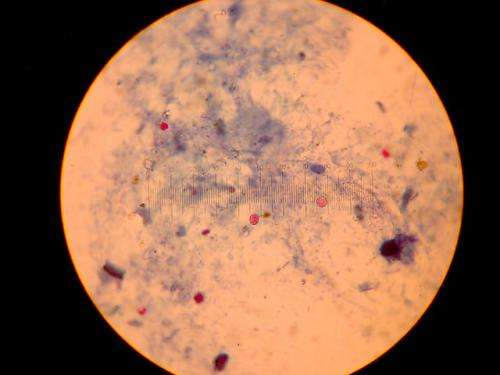Gene sequencing refines threatening parasite list

Twenty-six species of Cryptosporidium have been recognised and 18 species declared non-valid in a recent shake-up of the parasite's taxonomy using DNA sequencing techniques.
Cryptosporidium is the second biggest cause of infant diarrhoea and death in developing countries, and is found across 95 nations, including Australia.
The parasite spreads by reproducing in the small intestine of its hosts, generating spore-like oocysts that are shed in the faeces and then consumed in contaminated food or water.
Current testing for Cryptosporidium relies on immunoassays and microscopy, techniques that can identify the presence of oocysts, but not their species.
Since 20 of the 26 species are known to infect humans, this can have important implications for public health.
"Most of [the oocysts] look the same under the microscope, so the only way you can tell them apart is by looking at their DNA," says Murdoch University Professor Una Ryan, who worked with the US Centre for Disease Control and the US Department of Agriculture on the taxonomy project.
The team used a variety of DNA sequencing and typing techniques to identify gene fragments that are used to characterise each species.
"We [classified] which species were valid and which weren't [according to the shake-up of the parasite's taxonomy]...and which species were infectious to humans and which weren't," Prof Ryan says.
Understanding the exact species responsible for a cryptosporidiosis outbreak can help track the transmission of the parasite.
Environmental factors affect prevalence
Studies show geography, age, urbanisation and the time of year can all affect which Cryptosporidium species is more prevalent.
The only drug currently available to treat cryptosporidiosis is nitazoxanide, a broad-spectrum anti-parasitic agent that has no effect in immunocompromised carriers, including children suffering malnutrition or those infected with HIV.
Although cryptosporidiosis symptoms are generally self-limiting in healthy hosts, Cryptosporidium oocysts can survive for months outside the body.
"The oocyst stage is extremely environmentally robust. It's resistant to most disinfectants, it's resistant to chlorine in drinking water," Prof Ryan says.
Cryptosporidium relies on stomach acid to open the oocyst's leathery shell, releasing four banana-shaped sporozoites that invade the intestinal lining.
These sporozoites undergo rounds of asexual reproduction before specialising into male and female cells.
Sexual reproduction then produces fertilised zygotes, which develop into one of two types of oocyst.
"Thick-walled oocysts are shed into the environment, but the thin-walled oocysts continue a cycle of auto-infection within the host," Prof Ryan says.
"That's another reason it can be difficult to get rid of."
More information: "Cryptosporidium species in humans and animals: current understanding and research needs." Ryan U, Fayer R, Xiao L. Parasitology. 2014 Aug 11:1-19. [Epub ahead of print]. www.ncbi.nlm.nih.gov/pubmed/25111501
Journal information: Parasitology
Provided by Science Network WA


















